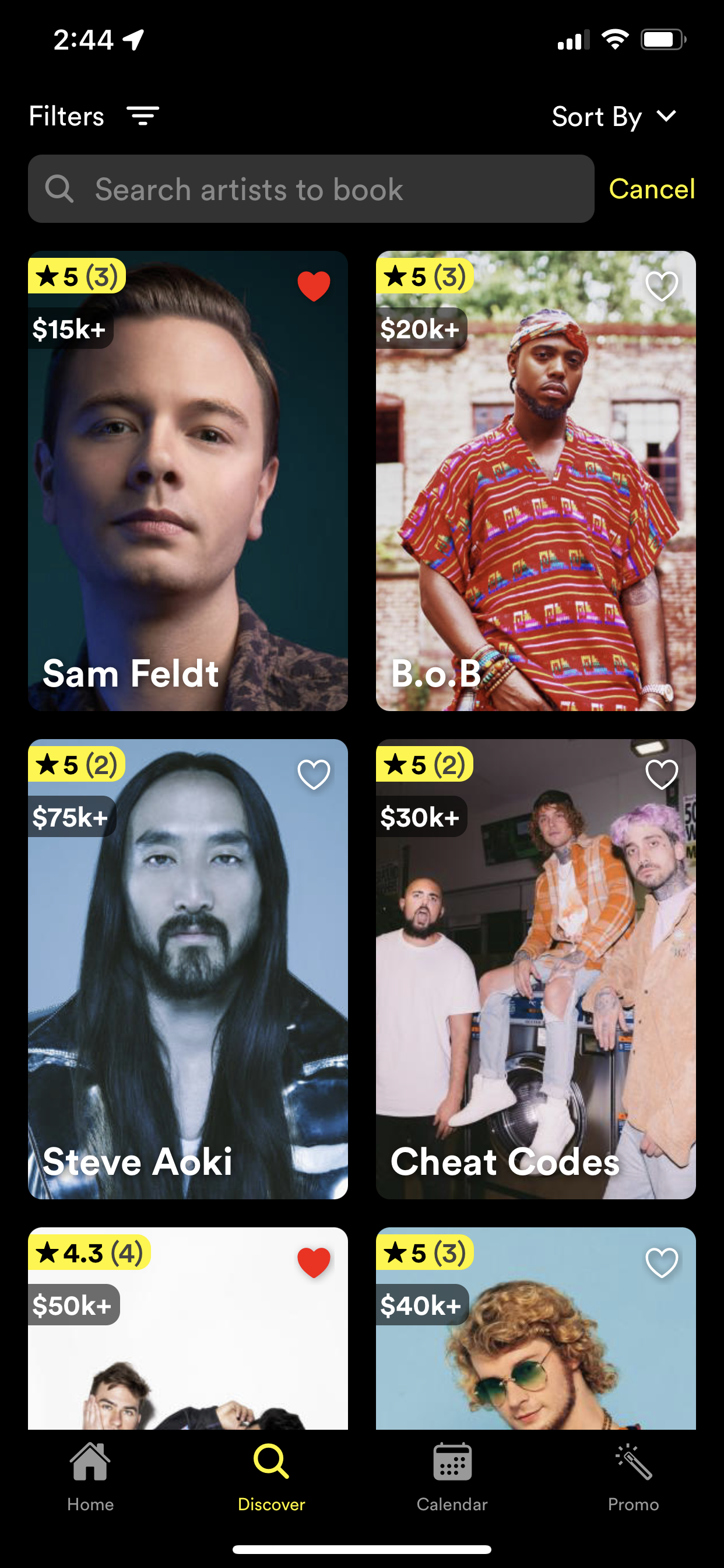Methodology
With gradual adoption in mind, it's useful to know the Solito methodology to navigation. You might be wondering, where am I sharing code here, and where do I write different code per-platform?
The answer: the code for screens is 100% shared. So is the code for navigating between screens.
So, where is code not shared? Whenever screens themselves are rendered.
Solito views your screens as primitives that make up your app (and website). It's up to your platform to implement how those screens are displayed. The platform is like the skeleton, ready to render your screens however it wants.
On iOS and Android, you'll implement these shared screens using stacks, tabs, and drawers from React Navigation. You have full freedom to organize your navigation and animations. To a React Native developer, this is nothing new.
Meanwhile, on Next.js, you will render your shared screen components inside of your pages folder like always.
To recap, the <ArtistScreen /> component is the same on iOS, Android and Web. The difference is, your Next.js website renders that via /pages/artist/[slug], whereas the native app renders it via <Screen component={ArtistScreen} /> from React Navigation.
So, how is this possible? Do the Next.js site and React Native app have to "communicate" somehow? How can <Link href="/users/fernando" /> open the same screen on both platforms?
Solito treats URLs as your source of truth. Your Next.js app and React Native app don't communicate at all. They live in total isolation. Solito works by doing this: give me a URL, I'll detect what platform you're using, and then I'll figure out how to navigate to the screen for that URL.
Lets call this headless navigation. Your screens are your primitives, and they're fully shared across platforms. It's then up to each platform to implement these screens, and ensure that the URLs across platforms map to the same screens.
Web vs. Native patterns
It's worth noting the differences between Web and Native navigation patterns. Web navigation is flat: you have one screen mounted at a time. When you navigate from one page to another, the current page unmounts, and a new one renders. On native, this is not the case. Native screens typically animate as they enter. They can be in a stack, tab, drawer, modal, nested stack, and so on.
If you change tabs on a native app, the previous tab remains mounted, preserving its scroll position and local state. You often have shared headers across pages. These behaviors are important to preserve. Cross-platform apps often get a bad rap because they try to make the user experience the exact same on every platform. They either make an app feel like a mobile website, or a website feel like an app. But this is not the goal. We need to match our users' expecations based on the platform they're using.
By using URLs as our source of truth for firing page changes, Solito doesn't get in the way of how you implement your screens. It lets your website have a completely different header, footer, and sidebar UI than your native app. Remember: your screens are your primitives, and your platform is your skeleton.
| BeatGig Website | BeatGig iOS App |
|---|---|
 |  |
While you share your screen code, the skeleton of your product can differ by platform. Take a look at the BeatGig website vs. iOS app above. Notice that the artist list is the same, but the navigation layout differs between the Website and iOS app. The website has a typical app header with a drawer menu, while the app has a native header and bottom tabs. This is the proper abstraction. If you want to make both platforms look identical, you can. But you aren't forced to.
Should I use Solito?
If you're building a Next.js app, there's no reason not to use Solito. After all, it provides all the functionality that you're already getting from useRouter and Link, plus some useful utilities like useParam. Plus, any native-only React Navigation code is tree shaken.
If you're building a React Native app with React Navigation, your app can be spun into a website in like a day or two. You should use the web's URL mental model to get around screens, rather than screen names. If you use Solito to get around screens and read in params, then the moment you want to turn your app into a Next.js site, the hard parts are already done.
And so, my short answer is, why not use Solito? If you think you'll ever use React Native, or React Native Web for your website (just like Twitter does), then Solito is future-proof. React Native is my go-to framework, even if I'm only building a website. And Solito glues it all together.
Context
My thinking for this methodology was first documented and discussed by the community here.